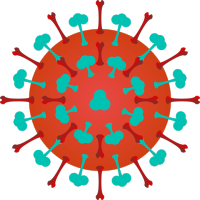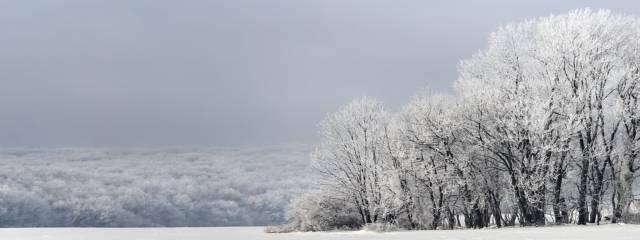| title | Liquorice Root |
| release time | 2006/1/15 |
| source | Jade Knock Studio |
Liquorice Root is the dried root and rhizome of the leguminous plants Glycyrrhiza uralensis Fisch., Glycyrrhiza inflata Bat., or Glycyrrhiza glabra L. It is mainly wild but also cultivated. The medicinal material is divided into two categories based on origin: East Grass and West Grass. East Grass refers to those produced in eastern Inner Mongolia, Northeast China, Hebei, and Shanxi, while West Grass refers to those produced in western Inner Mongolia, Xinjiang, Gansu, Shaanxi, and Qinghai. Generally, those produced in Hangjin Banner of Ih Ju League in Inner Mongolia are called "Liangwai Grass," and those produced in Alxa Left Banner of Bayannur League in Ningxia are called "Wangye Di Grass." It is traditionally believed that Liangwai Grass and Wangye Di Grass are of the highest quality and are considered genuine regional materia medica.
Materia medica research suggests that the medicinal Liquorice Root has always been considered authentic when derived from the Glycyrrhiza genus of the legume family, with Glycyrrhiza uralensis being the primary species used. Historical records indicate that the main production areas of Liquorice Root are Shanxi, Shaanxi, and Gansu. The area around Hangjin Banner in Ih Ju League, Inner Mongolia, was known as the "Liquorice Root City" as early as the Sui and Tang dynasties, indicating its fame as a significant Liquorice Root production region.
bubble_chart Varietal Identification
Liquorice Root is named for its sweet taste. The *Shuowen* states, "Gan (苷) is Liquorice Root." The *Guangya* mentions, "Meidan (美丹) is Liquorice Root." The *Mingyi Bielu* also lists names such as Migan (蜜甘), Meicao (美草), and Micao (蜜草). Liquorice Root is not only sweet but also excels at removing toxins. The *Bielu* describes it as "capable of resolving a hundred dermatitis medicamentosa, the essence of the nine soils, harmonizing seventy-two types of stones, and twelve hundred herbs." It is also known as "Guolao" (國老, State Elder). Tao Hongjing explained, "This herb is the master of all medicines, and classical formulas rarely omit it, much like how Aquilaria is essential in incense. Guolao, meaning 'State Elder,' is akin to an imperial teacher—though not a ruler, it is revered by rulers. Thus, it can harmonize herbs and stones while removing toxins." Modern research confirms that glycyrrhizin in Liquorice Root hydrolyzes to release glucuronic acid, which can bind to toxins containing carboxyl or hydroxyl groups, reducing their absorption. Its corticosteroid-like effects also enhance the body's tolerance to toxins. Therefore, although early texts make it difficult to identify specific Liquorice Root species, it is reasonable to regard it as a group of Glycyrrhiza plants containing glycyrrhizin.
It should be noted that the name Liquorice Root refers to a beautiful grass, as stated in Duan's commentary on "Shuowen": "All that is palatable in Wuwei is called sweet." Therefore, in ancient literature, Liquorice Root sometimes was a general term for beautiful grass and not necessarily plants of the Glycyrrhiza genus. For example, in "Zhuangzi·Qiwulun," it is said, "People eat grass-fed animals, and deer eat Jian." Lu Deming's "Zhuangzi Yinyi" collects various annotations, stating, "Jian, Sima says it is beautiful grass, Cui says it is Liquorice Root." Also, in "Han Shi Wai Zhuan" volume 5, it is said, "In the west, there is a beast named Jue, with front legs like a mouse and hind legs like a rabbit. When it finds Liquorice Root, it will carry it to give to Qiongqiong Juxu." These Liquorice Roots may not all be the medicinal Liquorice Root used today. It is especially important to note that in "Erya," it is said, "Ling, Da Ku," and both Sun Yan and Guo Pu annotate it as, "Today's Liquorice Root, which grows spreading, with leaves resembling lotus, green-yellow, stems red-yellow with joints, and branches at each joint. Some say Ling resembles Rehmannia." "Jiayou Materia Medica" cites this under the Liquorice Root entry, and "Bencao Tujing" further cites "Shi·Tangfeng," "Gather Ling, gather Ling, on the peak of Shouyang," stating that Ling and Ling are used interchangeably. Su Song says, "Shouyang Mountain is in Puzhou County, Hedong, close to where today's Liquorice Root grows, but the descriptions of the seedlings and leaves by ancient scholars are completely different from today's. Could it be that the species are different?" Su Song's doubt is indeed reasonable. This "Liquorice Root" with leaves resembling lotus or Rehmannia, Shen Kuo believes to be Air Potato. In "Mengxi Bitan" volume 27, it is said, "Its taste is extremely bitter, called Da Ku, not Liquorice Root." His statement may be correct. The so-called "Ling, Da Ku" Liquorice Root should be considered as a homonym for the medicinal Liquorice Root, and it is not necessary to think that there was confusion of species at that time.The Song people's description of the morphology of the Liquorice Root plant was very accurate. The "Tujing" states: "In spring, green seedlings emerge, reaching a height of one to two feet, with leaves resembling those of the locust tree. In July, purple flowers bloom, similar to those of the apple tree. In winter, it bears fruit in the form of pods like those of the pea. The roots can be three to four feet long, with varying thickness, red skin, and horizontal ridges, beneath which are fine roots. The roots are harvested on the last day of the second and eighth months, dried in the sun for ten days, and then the head and red skin are removed. Nowadays, it is said to be dried in the shade for use. There are several types of Liquorice Root today, with the firm and well-textured ones being the best. The light, hollow, and fibrous ones are inferior and only used by soup vendors." The "Bitan" Volume 27 states: "The branches and leaves of Liquorice Root are entirely like those of the locust tree, reaching five to six feet in height, but the leaf tips are slightly pointed and rough, as if covered with white hairs. The fruit forms pods, similar to those of the love pea, growing on a single stem. When ripe, the pods split open. The seeds are like small flat beans, extremely hard, and cannot be broken by biting." The "Bencao Yanyi" is similar. Particularly interesting is that both Shen Kuo and Kou Zongshi mention that the seeds of Liquorice Root are "extremely hard and cannot be broken by biting." Even today, planting Liquorice Root still requires artificial methods to damage its hard shell to improve the sprouting rate. From the medicinal illustrations and distribution in the "Zhenglei," it is clear that the Liquorice Root used at that time was mainly Glycyrrhiza uralensis.
bubble_chart Historical Changes in Authentic Origins
Liquorice Root comes from the northern regions. The "Bielu" states: "It grows in the river valleys of Hexi, the Jishan Mountains, and Shangjun." During the Northern and Southern Dynasties, due to the separation of the north and south, it came from Sichuan. The "Jizhu" states: "Hexi and Shangjun no longer trade, and now it comes from Shu and Hanzhong, all from the Wenshan tribes. The red-skinned and well-textured ones, which look firm, are the best, known as 'Baohan grass.' Baohan is a Qiang place name. There are also those dried by fire, which are mostly hollow and loose, and some resemble carp intestines, damaged by knives and no longer good. There is also some in Qingzhou, but it is inferior. There is also purple Liquorice Root, which is fine and solid, and can be used in times of scarcity." According to records, Liquorice Root does not grow in Sichuan. Tao's statement "now it comes from Shu and Hanzhong, all from the Wenshan tribes" refers to the trade routes at that time, with the original production area "Baohan" located in present-day Linxia, Gansu. Additionally, according to the "Liangshu: Records of Foreign Tribes": "In the fourth year of Tianjian (505 AD), King Liang Mibo of Dangchang came to offer Liquorice Root and Chinese Angelica." Dangchang is located in present-day Min County, Gansu, indicating that during the Qi and Liang periods, Gansu was the main production area for medicinal Liquorice Root in the south.
Since the Song Dynasty, the production areas of Liquorice Root have not changed much, still mainly in Shanxi, Shaanxi, and Gansu. The "Tujing" states: "Now it is found in all the prefectures of Shaanxi and Hedong." The "Zhenglei" depicts Liquorice Root from Fuzhou and Fenzhou, with Fuzhou located in present-day Fugu, Shaanxi, and Fenzhou in present-day Fenyang, Shanxi. The "Pin Hui Jing Yao" mentions, "The best comes from Longqingzhou in Shanxi," with Longqingzhou being present-day Yanqing County in Beijing, which might have been a distribution center for Liquorice Root at that time. The "Yaowu Chuchan Bian" states: "Produced in Inner Mongolia, commonly known as Wangye Di."







